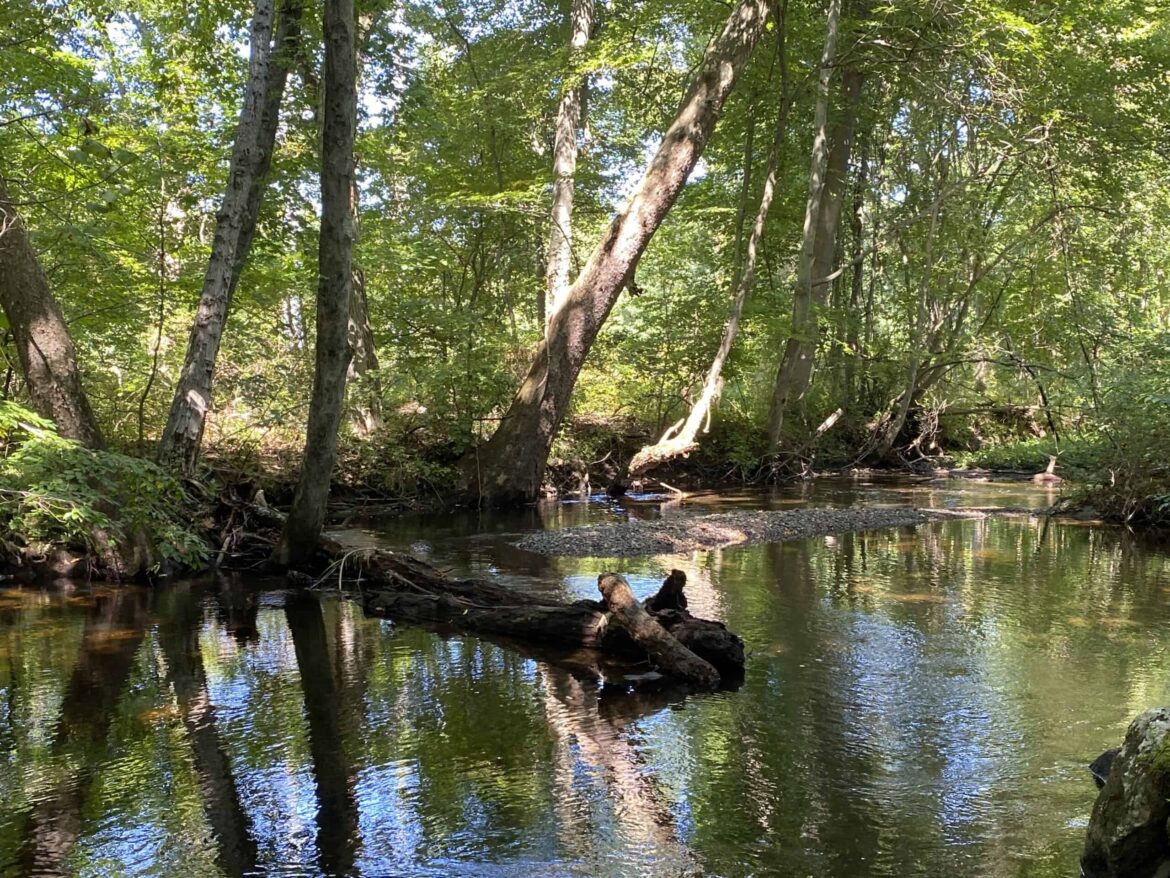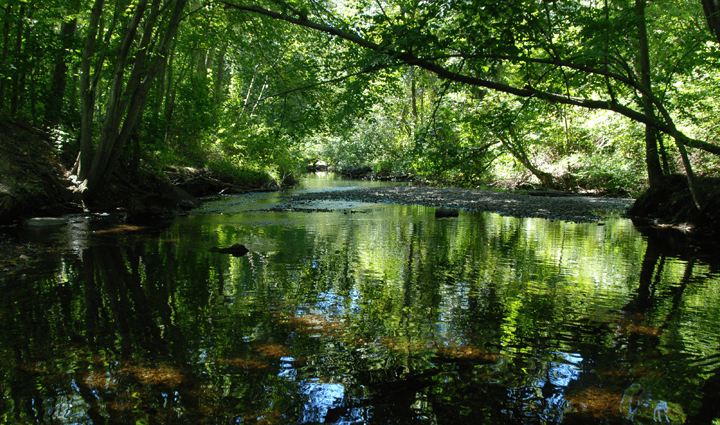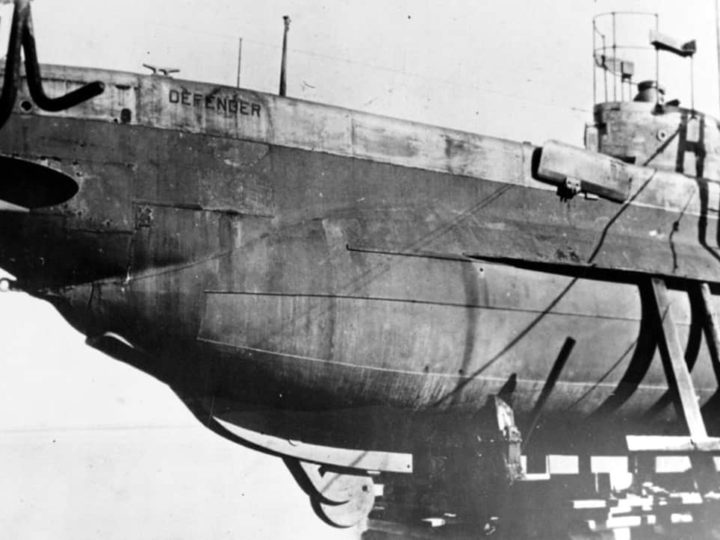
Eisenhower Park
A city treasure approaches 50
After 24 years as chairman of Milford’s Park, Beach, and Recreation Commission, Dan Worroll is still amazed by “Eisenhower Park’s sheer size. Even more amazing are its fantastic features, with sports fields, a playground, trails, gardens, and natural woodland adjacent to a 9-hole golf course. Whatever you want, it’s there!”
Location
Located on North Street (Route 121) approximately one mile north of Route 1, “Eisenhower Park’s acreage once totaled 333 acres, adding in the 100-acre Solomon Woods, a separate parcel across West Street known for its significant wetlands”, explains Jeremy Grant, manager of Milford’s Open Space and Sustainability Department. Still the city’s largest, “the park is roughly 230 acres, consisting of primary active and passive recreational areas”. The active areas include Bodie’s Place (a fenced-in, accessible playground), Foote Field, Leroy Doolittle Tennis Courts, pickleball courts, a splash pad, dog park, community garden, and hiking trails. “The passive areas,” Grant explains, “contains a mixture of fields, forests, vernal pools, wetlands, and the Wepawaug River which flows the entire length of the park.”
Eight aerial park surveys taken from 1934-1990 show “interesting changes in the river and pond area,” says Steven Johnson, Milford’s tree warden and assistant director of Public Works. For decades, there were piers, a dock, and a large pond. The waterways were most affected after Hurricane Gloria (1985), which rerouted the brook that fed the pond. After the pond became stagnant, the park’s usage transformed.
Ecology
In 2022, Grant asked for an updated park assessment from CT Department of Energy and Environmental Protection (DEEP), which “provides municipalities and landowners access to a certified forester once per year free of charge.” CT DEEP’s Field Visit Recap made recommendations about the tree cover, understory, forest floor, wildlife, and native/invasive species. “Almost all of Eisenhower is listed as a Natural Diversity Area, which indicates the ecosystem contains endangered, threatened, and special concern species,” explains Grant. “This is one of the reasons we ask visitors not to disturb wildlife or walk off trails. Parks should be enjoyed using the ‘Leave No Trace’ principles.”
History
This rustic setting was perfect for a YMCA summer camp. Camp Clark’s first session opened in 1959, a haven for Milford kids until the late ‘70s. Former campers and counselors, like Patti Rottman Antonelli, who was “assigned to oversee the oldest group of girls,” reminisces about “the swimming pond, blueberry patches, teepees, mornings at the flagpole… It was the best job ever!”
In the 1960s, the Board of Education built new schools to keep up with Milford’s population surge. “A new school on West Avenue was nearing completion,” recalls Dick Platt. “Mayor Jepson suggested we name it after John F. Kennedy. When another school in the Red Bush Lane area was next, Jepson suggested we name it for Eisenhower, who had died in 1969. But this school was never built, as the population leveled off.” In 1970, Milford’s Alders proposed naming the former Asgrow property/Camp Clark after President Dwight D. Eisenhower. The official dedication ceremony occurred in June 1975.
One of these Alderman was Joseph Agro, Sr. “My father helped negotiate the sale of approximately 139 acres,” says his son, retired developer, Joe Agro, Jr. “It was considered for a municipal golf course and the PGA visited to assess this idea. Because of the extensive wetlands, flood plains, and rough terrain, the idea wasn’t considered any further.”
Restoration Studies
By the early 2000’s city officials recognized the underused park was sorely in need of restoration. On April 23, 2003, Mayor James Richetelli created the Eisenhower Park Study Committee (EPSC), appointing Joe Agro as chairman. The other EPSC members were from a variety of professional backgrounds and included Mark Lofthouse, Joanna Casey Piscitelli, Sheila Daniel, Lewis Hurwitz, Stephen Wing, Daniel Quirk, and Herb Cables. “We had the interest of the people of Milford foremost,” Agro says, and “were given money to do all the surveys… topographical, flora and fauna…and this became the benchmark of what we had and where to proceed.”
Prior to presenting a 32-page PowerPoint to the mayor about the park’s neglected state, Mark Lofthouse, who eventually chaired the ESPC, “turned over every stone and walked around every corner… wanting to draw attention to what needed to be done. What our committee finally approved resulted in the Vision Plan Map, which shows the park in total. The final phase included a pool where the tennis courts are now. We knew we couldn’t do it all at once, but our vision was to create an oasis for all the people of Milford.”
The EPSC’s official mission statement was: “To create a park that will meet the recreational needs of Milford’s citizens today and in the future, while enhancing and protecting the site’s natural resources.” Stantec Consulting Services (formerly Vollmer Associates) led the planning, design, engineering, and environmental consulting team. Land-Tech Consultants compiled a comprehensive Natural Resources Executive Summary, a valuable tool that helped the ESPC create the Eisenhower Park Master Plan.
The Plan
Published in 2007, the 117-page Master Plan report contains maps, photos, a site analysis, schematics, and goals and objectives outlining a three-phased plan for park improvements, funding, and stewardship. “We were so diligent over four years,” says Agro, “that every time we went on vacation, we brought back photos and plans of other parks from all over the world to help inspire us.”
“At Eisenhower Park we’ve hosted MusicFest, Happy Haunts Hollow (in partnership with Pantochino Productions), MAC@the Park Concert series, Eastbound Theatre, and various Shakespeare in the Park productions.” —Paige Miglio, executive director Milford Arts Council
“Did you know the park property was mined for gravel when I-95 was constructed?” says landscape architect Steve Wing, who brought decades of park design experience to the ESPC committee. “A major objective was to provide a comprehensive, long-range framework for future improvements, not to come up with a giant ‘do it now’ project. Protection of the park’s natural resources became a major priority.”
Joanna Casey Piscitelli was known as ‘the kid’ and a young mom when she accepted Mayor Richetelli’s invitation to join the ESPC. “I have a B.S. in Park and Recreational Management from UCONN, so I was delighted to put my education to work,” she recalls. Highlights included “taking walking tours of Eisenhower and other parks for ideas and styles,” and meeting with community, professional, and regional groups “to further our knowledge of the park, its environmental significance, and potential.”
Landscape architect Gary Sorge led the EPSC design team. “We established a vision, spurred the new bridge for greater connectivity and trail continuity, a wet meadow funded by a regional utility provider, and play area enhancements led by community residents,” he points out. “One of the largest changes was determining the usages of the park and how the exiting stakeholders would be accommodated with the new vision.”
Recreation for all
Milford’s Director of Recreation for 20 years, Bill Garfield is familiar with all of Eisenhower Park’s stakeholders. “The park is a busy place,” he confirms. “Foote Field, our lighted softball field, gets the heaviest use, 5-days a week plus little league on weekends, running from late April through September. Our eight tennis and pickleball courts are full, from 8:00 am until 9:45 pm. Reservations get snapped up the moment they go online. Our handball wall is just as popular. There’s fishing at the lower pond (license required), and the splash pad has been a big success, as is the dog park. Next to the Community Gardens are two huge soccer fields. Our high schoolers run cross country, and there are always walkers and sometimes horseback riders on the trails.”
Garfield is enthusiastic about the cultural programs, charity runs, events, lessons, camps, tournaments and more that take place year-round at Eisenhower Park. “It’s an open park with so much great stuff! And it’s especially great to see so many people there, enjoying the outdoors.”




